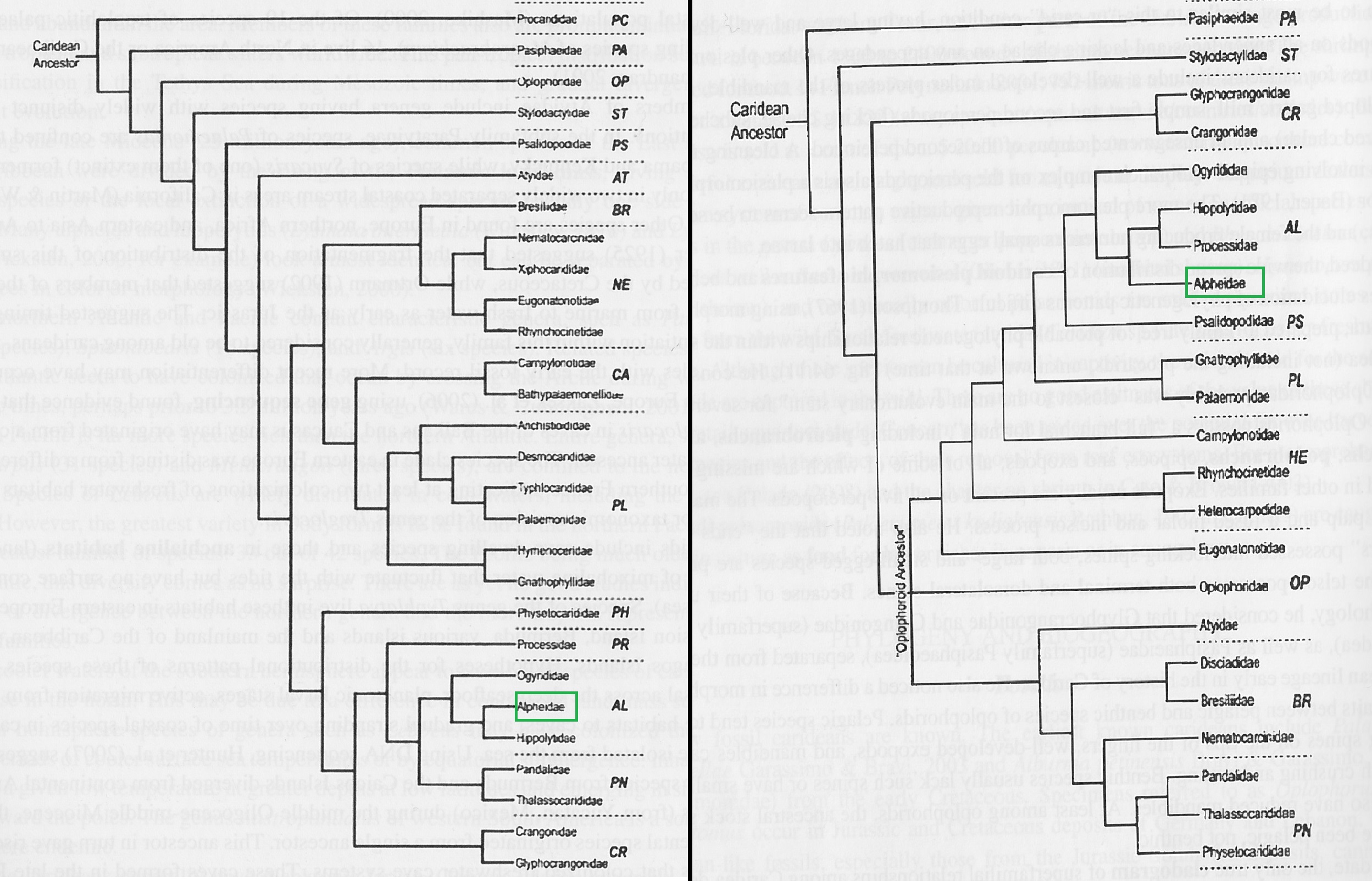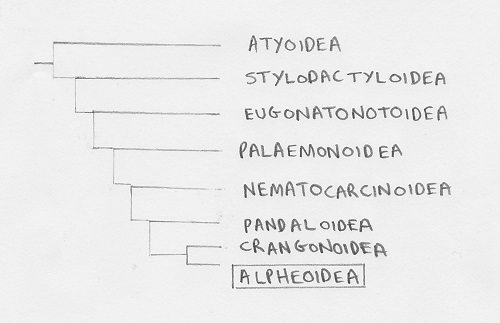Alpheid shrimp are thought to be one of the most ecologically diverse groups of coral dwelling fauna (Hultgren & Duffy 2011). Alpheus parvirostris belong within the super-family Alpheoidea, which are defined by having their first pair of pereopods resemble chelae (snapping claws) (Chace Jr 1992). Shrimp belonging to the Alpheidae family like Alpheus parvirostris are separated from other Caridean families by their carapace consisting of a cardiac notch within the posterior margin and their eyes are often covered (partly or fully) by their carapace (Chace Jr 1992). Alpheus parvirostris is thought to belong to the Edwardsii species group which in turn lies within the Alpheus genus (Anker et al. 2006). Caridean shrimp are thought to have first appeared around 263 million years ago, during the early Permian (Wicksten 2010).

Alternative cladograms of both family and super-family phylogenetic relationships within the infraorder Caridea. Alpheidae family from which
Alpheus parvirostris belongs is boxed green (left based on Chace 1992, after Bauer 2004; right after Thomson 1967, redrawn by Bauer 2004).

Caridean super-family relationships depicted in a cladogram. Information adapted from Christoffersen 1989.